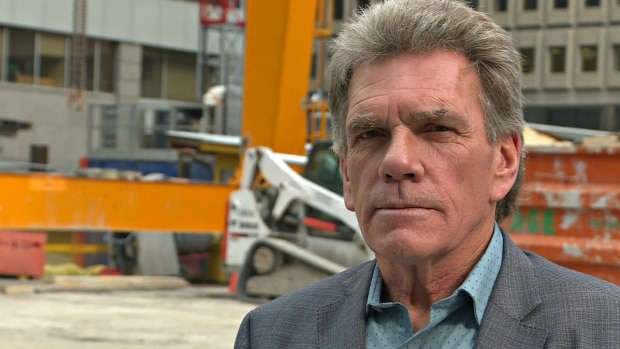LRT injuries raise alarms
By Carlos Verde
A 28-year-old construction worker suffered a neck injury while working at the LRT tunnel’s downtown construction site on Nov. 27, prompting a local labour council to sound the alarm again about safety problems with the massive infrastructure the project.
A number of incidents — including the Rideau Street sinkhole, a crane collapse and various minor accidents— have beset the multi-billion-dollar project and left a leading Ottawa labour leader worried.
“Our concern is when the contractor is trying to fulfill a timeline obligation under the contract, things are sped up. And when that happens, safety issues are overlooked,” said Sean McKenny, president of the Ottawa & District Labour Council. “Workers there get pushed a bit, and it ends up with accidents occurring on the site.”
The added stress of a tight political deadline — the City of Ottawa has trumpeted the project’s planned 2018 completion with the tagline “On Track for 2018” — may compound issues at the underground site, said McKenny.
In August, Metro Ottawa and the Ottawa Business Journal reported that 470 safety orders had been issued by the Ontario Ministry of Labour in connection with the LRT project, which had also generated more than 50 worker complaints.
At the time, McKenny called the number of safety orders “way, way high” — even for a project the size of the LRT — and says the number of injuries that continue to occur in the light-rail construction zone is concerning.
Ottawa Construction Association president John DeVries sees things differently.
“There are world-class firms, (but) sometimes incidents happen,” said DeVries. “A mobile crane goes there, it’s a single-operator error. It’s a nice objective to get to zero (injuries, but) statistically we know a million hours of work is going to have somebody stub their toe.”
The head of the OCA believes a project of this scale has too much oversight for safety violations to slip through the cracks.
“This is Ottawa’s largest project, billions of dollars, a million man hours, all large, professional firms (that) are full of safety controls,” continued DeVries. “It’s got the Ministry of Labour wrapped all over it. Daily inspections, site visits because of media attention . . .
“There’s going to be incidents, (and) you learn by those, try to improve — that’s how the industry works.”
A number safety complaints have been filed anonymously, and city transit chief John Manconi said earlier this year he wants more concrete information about alleged infractions of safety rules.
“What’s concerning is that we’re doing this hearsay stuff, rather than getting those facts out on the table,” Manconi told the CBC in March. “If those employees have those concerns they should escalate them. I deal in facts.”
McKenny, the ODLC president, claimed that some basic facilities for workers, such as toilets, were not adequate at the tunnel site until recently.
“In addition to those workers that have been injured, the porta-pottys were pretty bad,” said McKenny, who acknowledged that the issue has been rectified in recent months. “The folks that were working down there weren’t using them, but still had to go — they’d do it where they had free space in the tunnel, and that led to all kinds of problems down there, including smell.”
Originally planned to begin partial service in conjunction with Canada 150 celebrations in 2017, the Confederation Line is scheduled to open in 2018. The project is being completed by the Rideau Transit Group consortium, which includes engineering giant SNC-Lavalin,construction firm EllisDon and others.

